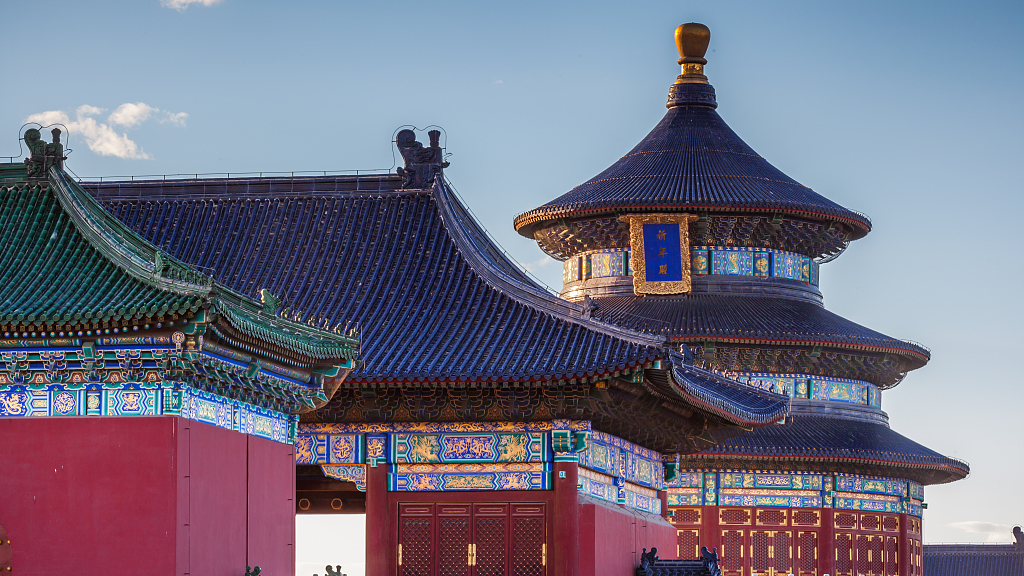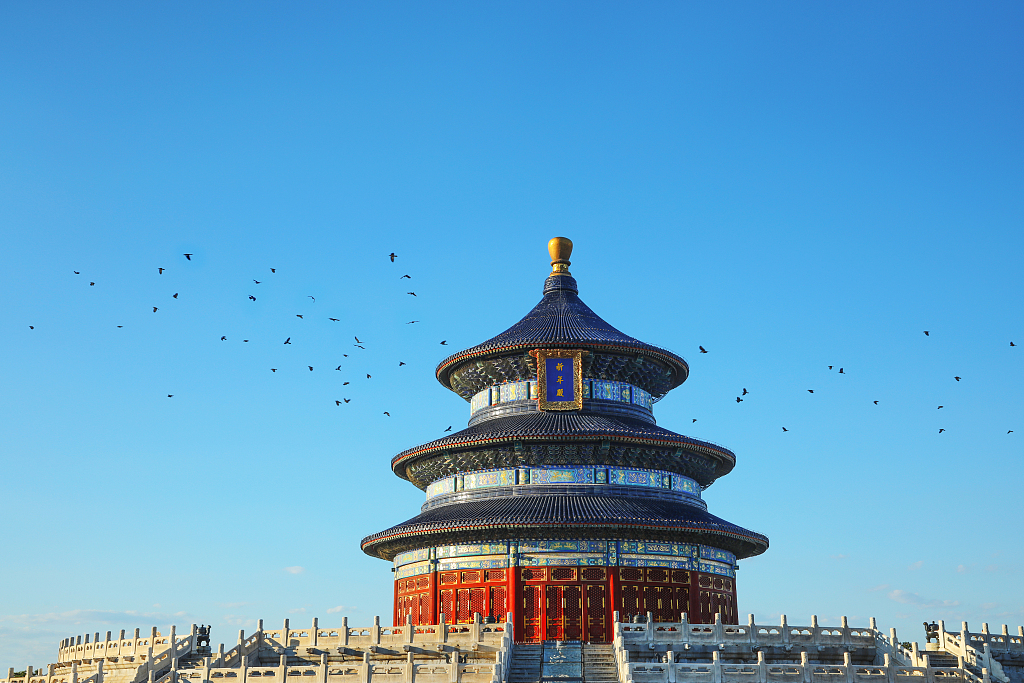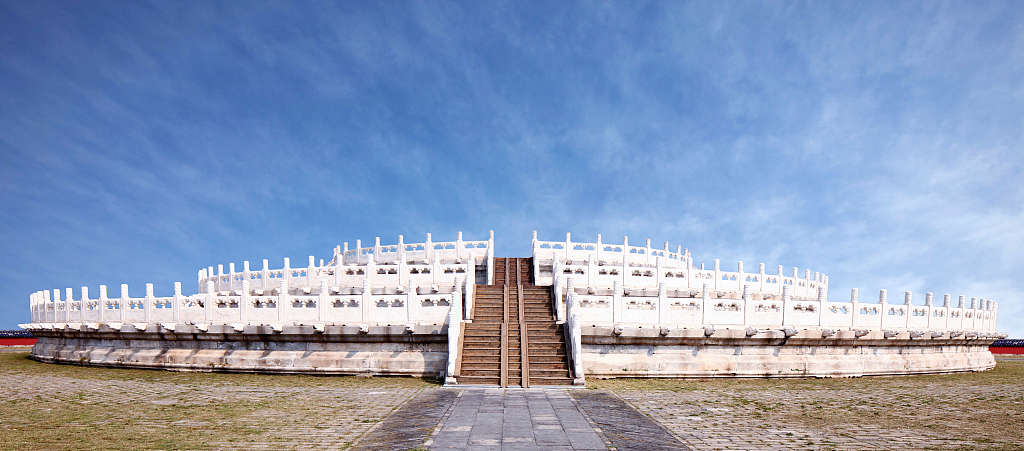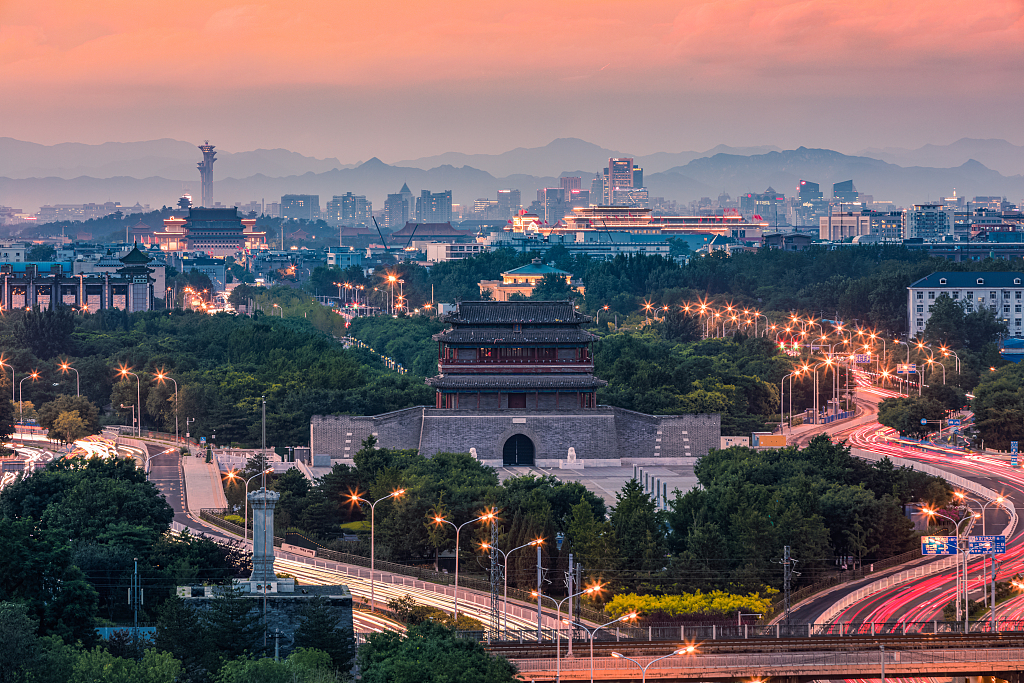
Covering a vast area of 273 hectares, the Temple of Heaven serves as the largest extant sacrificial architectural complex in China. /CFP
Covering a vast area of 273 hectares, the Temple of Heaven serves as the largest extant sacrificial architectural complex in China. /CFP
The Temple of Heaven, situated on the central axis of Beijing, served as a site for emperors of the Ming (1368-1644) and Qing (1644-1911) dynasties to worship the heavens and offer prayers for a bountiful harvest.
Covering a vast area of 273 hectares, it ranks as the largest extant sacrificial architectural complex in China. It also reflects the relationship between heaven and earth, an important marker in ancient Chinese cosmology, in terms of its overall layout and individual architecture.

The Hall of Prayer for Good Harvests, the main building of the Temple of Heaven. /CFP
The Hall of Prayer for Good Harvests, the main building of the Temple of Heaven. /CFP
The main building of the Temple of Heaven is the Hall of Prayer for Good Harvests. Emperors used to hold their Heaven Worship Ceremony here, praying for clement weather and abundant harvests.
The Hall of Prayer for Good Harvests is circular in shape, with a diameter of 32 meters and a height of 38 meters. It is a three-tiered circular pavilion-style building with a gilded and blue glazed tile roof.

The Circular Mound Altar. /CFP
The Circular Mound Altar. /CFP
Walking southward leads to an outdoor circular platform named the Circular Mound Altar, which consists of three levels of marble stones. In ancient times, the "Sacrifice to Heaven" ceremony was held on this altar during the Winter Solstice, the 22nd of the 24 solar terms.
The number of steps on the terrace of the altar, the stone platforms on each level, and the stone railings are all multiples of "nine" — corresponding with the "Nine Layers of Heaven." The repetition of this symbolic number emphasizes the supreme status of heaven in ancient Chinese religion and cosmology.
The Temple of Heaven in Beijing is an excellent example of ancient Chinese culture. Its location, architecture, and sacrificial ceremonies were based on traditional beliefs about the connection between heaven and earth, overseen by the emperor as the "Son of Heaven."
Although other dynasties built similar altars, the Temple of Heaven is the most representative and significant among many sacrificial buildings in China.
Among the many iconic structures erected along the Central Axis of Beijing, the Temple of Heaven stands out as a significant monument. As a testament to traditional Chinese culture and architectural excellence, it remains a cherished symbol of the city's rich history and cultural heritage.

The view of Yongding Gate on the Central Axis of Beijing. /CFP
The view of Yongding Gate on the Central Axis of Beijing. /CFP
The Central Axis of Beijing is a crucial part of the city's urban planning and architectural heritage. It runs through the heart of the city, spanning from the Bell Tower in the north to Yongding Gate in the south, covering a distance of about seven kilometers.
Along this axis, one can find numerous landmarks, such as the Drum Tower, Qianmen Gate, Tian'anmen Square, the Forbidden City, and Jingshan Hill.
The axis represents the cultural and historical essence of Beijing, and serves as a testament to the city's long and illustrious past. It is a must-see for anyone interested in exploring the city's rich heritage and architectural wonders.